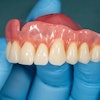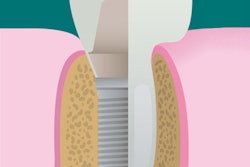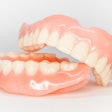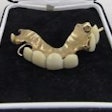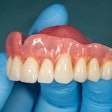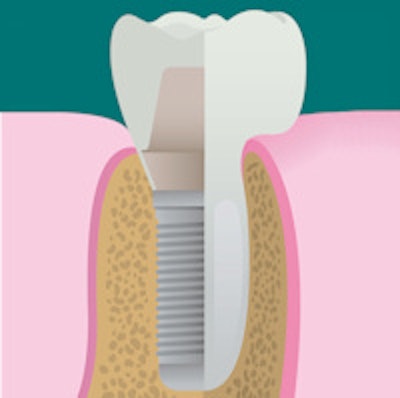
Implant restorations can significantly improve the quality of life of postmenopausal women with osteoporosis and tooth loss, according to a new study published in the International Journal of Dentistry.
Researchers found that women with implants were more satisfied with their occupational, health, emotional, and sexual quality of life than those with fixed partial dentures, removable partial dentures, or no restorations.
The group from Case Western Reserve University's School of Dental Medicine surveyed more than 200 partially edentulous but otherwise healthy osteoporotic postmenopausal women about their quality of life using the Utian Quality of Life scale. The results showed that implants improved the women's quality of life in profound ways by increasing comfort, speech, chewing function, and fit compared to other restorations (Int J Dent, Vol. 2015, Article ID 451923).
 Leena Palomo, DDS, MSD, from Case Western Reserve.
Leena Palomo, DDS, MSD, from Case Western Reserve."Our research suggests that there are likely some comfort-related factors, some functionality, and some aesthetic reasons why an implant restoration bypasses the quality of the others," co-author Leena Palomo, DDS, MSD, an associate professor and director of the periodontics program at Case Western Reserve, said in an interview with DrBicuspid.com. "Intuitively it would make sense that an implant restoration is better in comfort and function compared to a fixed or removable restoration, but the collective effect of these factors is seen in distant psychosocial measures."
Implants improve all quality-of-life aspects
Previous investigations by cosmetic surgeons have found that as women age, they focus more on the appearance of the lower third of their face, making it a central part of their self-image and perhaps overall quality of life. While Dr. Palomo and colleagues were able to find some studies suggesting that implants improved esthetics and self-image, they found none that specifically looked at postmenopausal women.
To see how certain restorations affected this group's quality of life, the researchers obtained participant charts from the Case/Cleveland Clinic Postmenopausal Wellness Collaboration database. They then sent the 23-question Utian Quality of Life scale to partially edentulous but otherwise healthy postmenopausal women. The survey asks questions on a scale of 1 to 5, where 1 is "not true of me" and 5 is "very true of me."
Nearly 240 women returned the completed survey:
- 64 had implant restorations.
- 60 had fixed partial dentures.
- 47 had removable partial dentures.
- 66 had no restorations to restore missing teeth.
Dr. Palomo and colleagues found a significant difference in all quality-of-life areas measured and in overall Utian Quality of Life score between the four groups of subjects. Those with implants had the highest overall score, at 107.58.
| Quality-of-life scores by restoration type | |||||
| Type | Overall score | Occupational | Health | Emotional | Sexual |
| Implants | 107.58 | 26.79 | 26.45 | 25.75 | 28.59 |
| Fixed partial dentures | 99.88 | 26.86 | 21.32 | 26.86 | 24.84 |
| Removable partial dentures | 73.77 | 21.42 | 20.05 | 17.03 | 15.26 |
| No restoration | 66.56 | 20.59 | 19.23 | 15.29 | 11.45 |
There was little difference between implant restorations and fixed teeth-supported restorations, the authors noted. The findings were statistically significant regardless of smoking history.
Restorations are part of a bigger picture
Some aspects of the quality-of-life score are based on subjective metrics that can be influenced by outside factors, such as patient preferences, interests, and backgrounds, the researchers noted. The study also only focused on women in order to remove the possibility of gender differences influencing prosthesis satisfaction.
As for potential future studies, Dr. Palomo believes more work needs to be done to find out why women with implants scored significantly better on the survey.
"I can only assume there is something we dentists can measure associated with an implant-retained restoration that finds its end point among the ... factors we tested," she said. "We need to take a closer look at how that happens from a mechanism point of view."
Finally, while dentists want to give patients the best care they can, they need to remember that oral health, including restorations, is just a component of a bigger picture.
"The most important thing, the message I want to get out, is the importance of looking at quality of life and patient-centered outcomes when we do our treatment planning," Dr. Palomo said.

